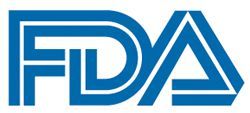News
Article
FDA Grants Priority Review to TLX101-CDx for Glioma Imaging
Key Takeaways
- The FDA has accepted the NDA for 18F-FET, granting it priority review, with a decision expected by April 2025.
- 18F-FET addresses limitations of conventional MRI in glioma imaging and may serve as a companion diagnostic for 131I-IPA.
The FDA has accepted and granted priority review to the new drug application for the glioma imaging agent TLX101-CDx.
FDA

The FDA has accepted the new drug application (NDA) for the glioma imaging agent 18F-floretyrosine (18F-FET; TLX101-CDx; Pixclara) and granted the application priority review. The agency’s decision on the NDA is expected by April 26, 2025, in accordance with the Prescription Drug User Fee Act target action date.1
“Telix believes that the FDA approval of [TLX101-CDx] will drive a step-change for brain cancer imaging in the United States [US] and bring it into line with a more advanced standard of care currently used in other markets,” Kevin Richardson, chief executive officer of Telix Precision Medicine, stated in a news release. “There is currently a critical need for better imaging in brain cancer, and Telix is dedicated to delivering precision medicine solutions that address patient needs and enhance both cancer imaging and treatment outcomes.”
Previously, in April 2024, the FDA granted fast track designation to the imaging product, which targets the membrane transport proteins LAT and LAT2.1,2
18F-FET is a PET agent used to characterize treatment-related changes in adult and pediatric patients with progressive or recurrent glioma. FET-PET is listed in international clinical practice guidelines for glioma imaging; however, there are no targeted amino acid PET agents approved for use in the US for adult and pediatric brain cancer imaging, leaving patients and providers subject to the limitations of conventional MRI, including lack of biological specificity, reliance on blood-brain-barrier disruption, and an inability to distinguish between disease progression and treatment-related causes.1
Pending further review from Telix, 18F-FET may also be developed as a companion diagnostic agent for TLX101-Tx (131I-iodofalan; 131I-IPA), which is an investigational LAT1-directed neuro-oncology drug that targets the same amino acid transporter mechanism with therapeutic targeted radiation.
131I-IPA is currently being evaluated in combination with best standard of care in patients with newly diagnosed glioblastoma in the phase 1 IPAX-2 trial (NCT05450744) and in combination with concomitant external radiation therapy in patients with recurrent IDH1/2-mutated high-grade glioma in the phase 2 IPAX-Linz-01 trial (EudraCT2021-006426-43).3,4
Earlier findings from the final analysis of the precursor phase 1/2 IPAX-1 trial (NCT03849105) demonstrated that 131I-IPA in combination with external beam radiation therapy was safe and tolerable as second-line therapy in patients with recurrent glioblastoma multiforme.5
In terms of safety, the most common treatment-emergent adverse effects (TEAEs) were decreased lymphocyte count, fatigue, headache, and hiccups, which occurred in 3 patients (30%), followed by decreased platelet count, diarrhea, cerebral edema, and insomnia, which occurred in 2 patients (20%).
AEs were largely low-grade, except for cerebral edema, and were clinically manageable. The majority were unrelated to therapy.
Preliminary efficacy, which was evaluated as a secondary end point, indicated that the median overall survival was 13 months from the start of treatment in the recurrent setting and 23 months from initial diagnosis.
References
- FDA accepts new drug application and grants priority review for TLX101-CDx (Pixclara) brain cancer imaging agent. News release. Telix. October 24, 2024. Accessed October 24, 2024. https://telixpharma.com/wp-content/uploads/2024/10/TLX_FDA_accepts_NDA_and_grants_priority_review_for_Pixclara.pdf
- TLX101-CDx (Pixclara) granted FDA fast track designation. News release. Telix. April 16, 2024. Accessed October 24, 2024. https://telixpharma.com/wp-content/uploads/2024/04/TLX_TLX101-CDx_Pixclara_Granted_FDA_Fast_Track_Designation.pdf
- 131I-TLX-101 for treatment of newly diagnosed glioblastoma (IPAX-2). ClinicalTrials.gov. Updated July 19, 2023. Accessed October 24, 2024. https://clinicaltrials.gov/study/NCT05450744
- An open label, single arm monocentric phase II study to evaluate safety, tolerability, and preliminary efficacy of carrier-added 4-L- [131I]iodophenylalanine (131I-IPA), administered as sequential injections in patients with recurrent IDH1/2 high grade glioma (HGG) concomitantly to 2nd line external radiation therapy. Eu Clinical Trials Register. January 10, 2022. Accessed April 16, 2024. https://www.clinicaltrialsregister.eu/ctr-search/trial/2021-006426-43/AT
- Final IPAX-1 study data confirms safety and tolerability profile for TLX101, preliminary efficacy data. News release. Telix. September 21, 2022. Accessed October 24, 2024. https://telixpharma.com/news-views/final-ipax-1-study-data-confirms-safety-and-tolerability-profile-for-tlx101-preliminary-efficacy-data/






%20(2)%201-Recovered-Recovered-Recovered-Recovered-Recovered.jpg?fit=crop&auto=format)

%20(2)%201-Recovered-Recovered-Recovered-Recovered-Recovered.jpg?fit=crop&auto=format)
%20(2)%201-Recovered-Recovered-Recovered-Recovered-Recovered.jpg?fit=crop&auto=format)